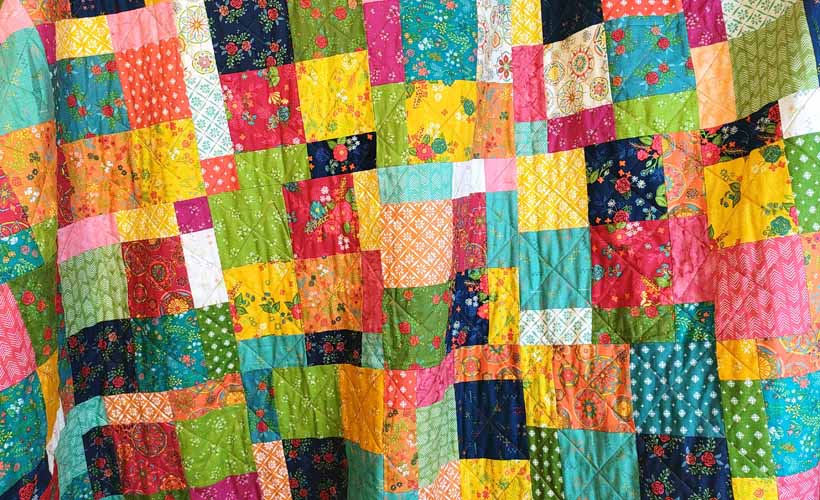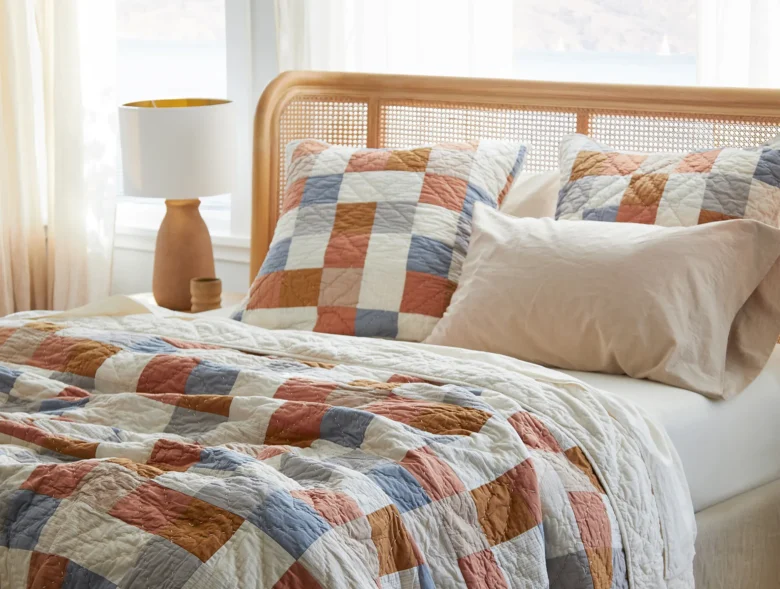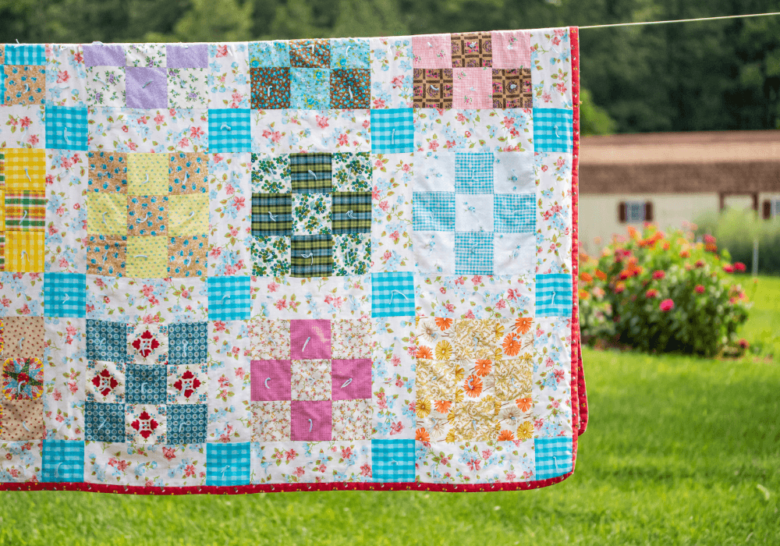When you think of quilts, do your thoughts drift to cozy winter nights or perhaps memories of your grandmother’s home? However, quilts are not just about warmth or vintage charm. They can be the very epitome of stylish home decor. With their intricate patterns, rich histories, and timeless appeal, quilts have effortlessly transitioned from our beds to our walls and beyond. This piece will explore the elegance and versatility of quilts in interior design.
Contents
The History of Quilting
Quilting boasts a deep and diverse history that spans cultures and centuries. From ancient Egypt to colonial America, quilts served both practical and symbolic purposes. Originally, quilts were designed out of necessity, providing warmth against cold temperatures. However, over time, they became canvases for artistic expression, capturing stories, traditions, and societal values.
By the 19th century, with the onset of the Industrial Revolution and access to a wider range of fabrics, quilts became more vibrant and intricate. Fast forward to today, and quilts, which were once primarily bedding essentials, are now treasured pieces of art adorning our homes in various forms.
Choosing the Right Quilt

Source: inspiredquiltingbylealouise.com
Selecting the perfect quilt, or edredones if you’re from a Spanish-speaking country, for your home decor demands attention to detail. Consider the room’s color palette. Do you want a quilt that complements, contrasts, or becomes the room’s focal point? Patterns, too, play a pivotal role. From geometric designs to floral motifs, the right pattern can elevate a room’s ambiance.
Size matters. A quilt that’s too small might be dwarfed in a large room, while an oversized one could overwhelm a space. Always measure your space and visualize the quilt’s presence in it before making a purchase.
Quilts as Wall Art
A striking trend in home decor is quilts as wall art, and their presence can transform a room in remarkable ways. When considering this unique decorative approach, it’s essential to ensure an optimal display:
- Choose the Right Hanging Method: Using a quilt hanger or a curtain rod is crucial to distribute the quilt’s weight evenly across its length. This not only prevents undue stress on the fabric but also ensures that the quilt hangs beautifully without sagging or pulling.
- Consider Wall Color: The color of your wall plays a significant role in how a quilt is perceived. A light-colored quilt can stand out beautifully against a darker wall, creating a captivating contrast. Conversely, a dark quilt can create a cozy, dramatic effect when hung against a lighter backdrop. Consider the mood and ambiance you want to create in your space.
- Rotate Quilts Periodically: Quilts, like any textiles, can be sensitive to prolonged exposure to direct sunlight, leading to fabric fading and weakening over time. To mitigate this, periodically rotate your quilts or consider installing UV-filtering window treatments to protect them from harsh sunlight. This simple step can help preserve your quilts’ vibrancy for years to come.
Quilts as Bedding

Source: apartmenttherapy.com
While quilts as wall art are captivating, the traditional use of quilts is, undoubtedly, on the bed. Here, a quilt can be more than just a functional piece; it can be a centerpiece that sets the tone for the entire room. A quilt can dictate the room’s theme and color scheme. Whether you opt for a timeless solid color quilt for a minimalist look or a vibrant, patterned quilt for a more eclectic vibe, it will become a defining element in your bedroom’s aesthetics.
Mixing and Matching Quilts
Integrating quilts with other bedding elements can be an art form that elevates your bedroom decor to new heights. If your quilt boasts a vibrant pattern, balance it with solid-colored pillows and sheets to create visual equilibrium. Conversely, if your quilt is a solid color, introduce pillows and sheets with patterns or textures to add depth and interest to your bedding ensemble.
For a truly harmonious look, extract colors from the quilt’s design and find bedding elements in those shades. This approach ties the entire ensemble together, creating a cohesive and well-thought-out appearance.
Quilts in the Living Room
Quilts aren’t confined to the bedroom; they can also play a significant role in elevating the decor of your living spaces. Whether you choose to use them as throws, couch covers, or draped over an armchair, quilts have the power to introduce texture, color, and comfort, making your living rooms feel exceptionally inviting.
Adding a quilt as a throw to a sofa or armchair can instantly soften the look of the room, creating an inviting and cozy atmosphere. Choose a quilt that complements your living room’s color scheme and style to tie the entire space together.
For those who appreciate a touch of bohemian chic, consider using quilts as couch covers. This unconventional approach not only protects your furniture but also adds a unique, artistic touch to your living room decor.
Seasonal Quilts

Source: quiltdom.com
Quilts are incredibly versatile and adaptable to seasonal decor changes. They can effortlessly transition your living spaces from one season to the next, providing both comfort and style. For the warmer months, consider using lightweight cotton quilts. Their breathability ensures comfort during hot weather while adding a touch of style to your decor. Opt for soft pastels or breezy patterns to capture the essence of summer.
As the temperatures drop, swap out your lightweight quilts for heavier, cozier ones. These quilts not only keep you warm during the colder months but also create a snug and inviting atmosphere in your home. Rich, deep colors and intricate patterns are perfect for fall and winter.
DIY Quilting Projects
If you’ve ever desired a more personalized touch to your decor, diving into DIY quilting projects can be a fulfilling and creative endeavor. Here are some tips to get you started on your quilting journey:
- Begin with small-scale projects such as quilted coasters, table runners, or placemats. These projects are not only manageable for beginners but also provide an excellent opportunity to practice fundamental quilting techniques.
- Explore online tutorials, quilting books, and community workshops to learn the basics of quilting, from selecting fabrics to mastering various stitching patterns.
- Consider using pre-cut fabric squares or strips for your first projects. These pre-cut pieces are readily available at craft stores and can save you time and effort in the initial stages of your quilting journey.
